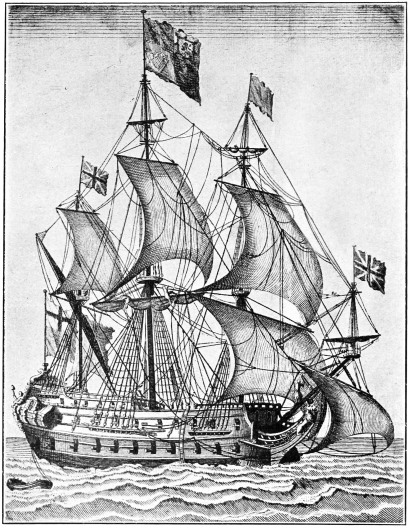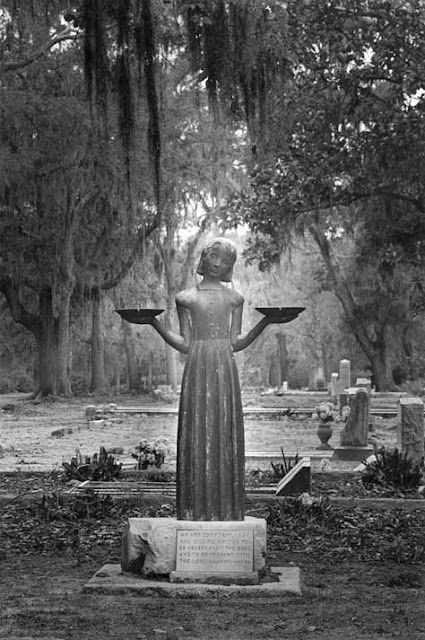A SIXTY-GUN SHIP OF LATE SEVENTEENTH CENTURY
From John Smith’s Sea-Man’s Grammar (1694 edition)
"There many people received the Truth with gladness, and Friends were greatly refreshed." George Fox
George Fox made a visit to the colonies in America during 1671-1673.
Today's post quotes Fox's account of difficulties of the passage of their ship across
the Atlantic and danger they encountered. Fox noted the parallel of
their journey to that of Apostle Paul from Palestine to Rome to appeal
his case to Caesar. We read of that journey in the 27th chapter of Acts. First we read of Fox's journey.
THE JOURNAL OF GEORGE FOX
Edited with an Introduction
and Notes By
Rufus M. Jones
From the 1694 First Edition
CHAPTER XVIII.
Two Years in America.
1671-1673.
"In the afternoon, the wind
serving, I took leave of my wife and other Friends, and went
on board. Before we could sail, there
being two of the King’s frigates riding in the Downs, the captain of one of them sent his
press-master on board us, who took three of our seamen. This
would certainly have delayed, if not
wholly prevented, our voyage, had not the captain of the other frigate, being informed of the
leakiness of our vessel, and the length of our voyage, in compassion and much civility,
spared us two of his own men.
Before this was over, a
custom-house officer came on board to peruse packets and get
fees; so that we were kept from sailing
till about sunset; during which delay a very considerable
number of merchantmen, outward-bound,
were several leagues before us.
Being clear, we set sail in the
evening, and next morning overtook part of that fleet about
the height of Dover. We soon reached
the rest, and in a little time left them all behind; for our
yacht was counted a very swift sailer.
But she was very leaky, so that the seamen and some of the passengers did, for the most
part, pump day and night. One day they observed that in two
hours’ time she sucked in sixteen
inches of water in the well.
When we had been about three
weeks at sea, one afternoon we spied a vessel about four
leagues astern of us. Our master said it
was a Sallee
man-of-war, that seemed to give us chase. He said, “Come, let us go to supper, and
when it grows dark we shall lose him.” This he spoke to please and pacify the passengers, some
of whom began to be very apprehensive of the danger. But Friends were well satisfied in
themselves, having faith in God, and no fear upon their
spirits.
[When the sun was gone down, I
saw out of my cabin the ship making towards us. When it grew dark, we altered our course to
miss her; but she altered also, and gained upon us.]
[Note - A Moorish pirate ship, named from Sallee, a
seaport of Morocco. This incident not only indicates Fox’s
simple faith in God but it also is a good illustration of the way in
which he inspired confidence in others. The captain believes in him.]
At night the master and others came into my cabin, and
asked me what they should do. I told them I was no mariner; and I asked them what they
thought was best to do. They said there were but two ways, either to outrun him, or to tack about,
and hold the same course we were going before. I told them that if he were a thief, they
might be sure he would tack about too; and as for outrunning him, it was to no
purpose to talk of that, for they saw he sailed faster than we. They asked me again what they should
do, “for,” they said, “if the mariners had taken Paul’s counsel, they had not come to the damage
they did.” I answered that
it was a trial of faith, and therefore the Lord was to be waited on for
counsel.
So, retiring in
spirit, the Lord showed me that His life and power were placed
between us and the ship that
pursued us. I told this to the master and the rest, and that the
best way was to tack about and steer our right course. I desired them also to put
out all their candles but the one they steered by, and to speak to all the passengers to be still and
quiet.
About eleven at night the watch called and said they
were just upon us. This disquieted some of the passengers. I sat up in my cabin, and, looking
through the port-hole, the moon being not quite down, I saw them very near us. I was getting up to go
out of the cabin; but remembering the
word of the Lord, that His life and power were placed
between us and them, I lay down again.
The master and some of the seamen came again, and
asked me if they might not steer such a point. I told them they might do as they would.
By this time the moon was quite
down. A fresh gale arose, and the Lord hid us from them; we sailed briskly on and saw
them no more.
The next day, being the first
day of the week, we had a public meeting in the ship, as we
usually had on that
day throughout the voyage, and the Lord’s presence
was greatly among us. I desired the people to remember the
mercies of the Lord, who had delivered them; for they might
have been all in the Turks’ hands by that
time, had not the Lord’s hand saved them."
They did reach the New World,
spent some time in Jamaica then came to North America where
the ship landed in Maryland. By the time of Fox's arrival on the American mainland in 1672,
there were already Quakers in New York and New Jersey. There were a total of ten Quakers in
the party from England and they spread out to various colonies. George
Fox made his way to Perquimans in Carolina where a Quaker
from New England had earlier settled. The party of Quakers
spent two years journeying and ministering and establishing
Quaker Meetings in America. Making contact with Native Americans was also one of their priorities. Accounts of their various experiences are told in Fox's Journal.
The master of the ship had gone to Fox for advice because he knew of the account in Acts 27 of Paul's difficult journey to Rome to appear before Caesar. Both the apostle Paul and George Fox had faith that no harm could come to them if they trusted in the guidance of God.
Acts.27
[1] And when it was determined that we should sail into
Italy, they delivered Paul and certain other prisoners unto one
named Julius, a centurion of Augustus' band.
[2] And entering into a ship of Adramyttium, we launched,
meaning to sail by the coasts of Asia; one Aristarchus, a Macedonian
of Thessalonica, being with us.
[9] Now when much time was spent, and when sailing was now
dangerous, because the fast was now already past, Paul admonished
them,
[10] And said unto them, Sirs, I perceive that this voyage
will be with hurt and much damage, not only of the lading and
ship, but also of our lives.
[11] Nevertheless the centurion believed the master and the
owner of the ship, more than those things which were spoken by
Paul.
[18] And we being exceedingly tossed with a tempest, the
next day they lightened the ship;
[19] And the third day we cast out with our own hands the
tackling of the ship.
[20] And when neither sun nor stars in many days appeared,
and no small tempest lay on us, all hope that we should be saved
was then taken away.
[21] But after long abstinence Paul stood forth in the
midst of them, and said, Sirs, ye should have hearkened unto me,
and not have loosed from Crete, and to have gained this harm and
loss.
[22] And now I exhort you to be of good cheer: for there
shall be no loss of any man's life among you, but of the ship.
[23] For there stood by me this night the angel of God,
whose I am, and whom I serve,
[24] Saying, Fear not, Paul; thou must be brought before
Caesar: and, lo, God hath given thee all them that sail with thee.
[25] Wherefore, sirs, be of good cheer: for I believe God,
that it shall be even as it was told me.
[41] And falling into a place where two seas met, they ran
the ship aground; and the forepart stuck fast, and remained
unmoveable, but the hinder part was broken with the violence of
the waves.
[42] And the soldiers' counsel was to kill the prisoners,
lest any of them should swim out, and escape.
[43] But the centurion, willing to save Paul, kept them
from their purpose; and commanded that they which could swim
should cast themselves first into the sea, and get to land:
[44] And the rest, some on boards, and some on broken
pieces of the ship. And so it came to pass, that they escaped all
safe to land.
Acts 28
[11] And after three months we departed in a ship of
Alexandria, which had wintered in the isle, whose sign was Castor
and Pollux.[12] And landing at Syracuse, we tarried there three days.
[13] And from thence we fetched a compass, and came to
Rhegium: and after one day the south wind blew, and we came the
next day to Puteoli:
[14] Where we found brethren, and were desired to tarry
with them seven days: and so we went toward Rome |
| Paul's Journey from Caesarea to Rome |
Matthew 8
[23] And when he [Jesus] was entered into a ship, his disciples followed him.
[24] And, behold, there arose a great tempest in the sea, insomuch that the ship was covered with the waves: but he was asleep.
[25] And his disciples came to him, and awoke him, saying, Lord, save us: we perish.
[26]
And he saith unto them, Why are ye fearful, O ye of little faith? Then
he arose, and rebuked the winds and the sea; and there was a great calm.







